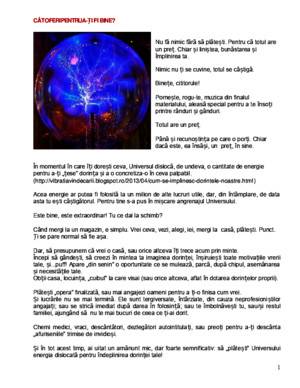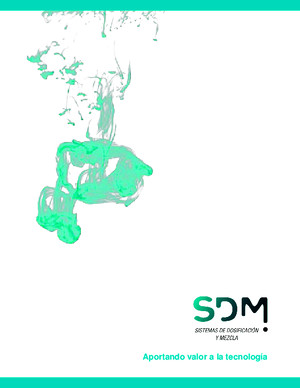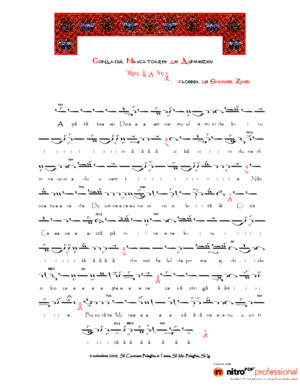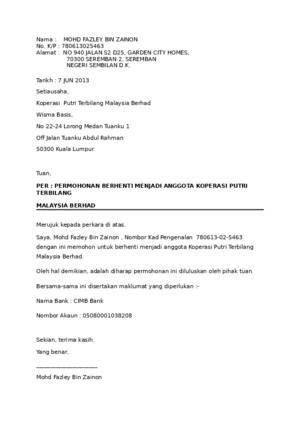Vibrato Awareness
There is document - Vibrato Awareness available here for reading and downloading. Use the download button below or simple online reader.
The file extension - PDF and ranks to the Documents category.
Tags
Related
Comments
Log in to leave a message!
Description
Download Vibrato Awareness
Transcripts
THE DOUBLE REED 127 Vibrato Awareness Geoffrey Burgess ew aspects of musical performance pro-voke as much emotionally-charged debate as vibrato Whether instrumental or vocal, vibrato is closely associated with human physicality, a fact that only fires the controversy A tremulous voice is taken as a sign of emotion, and the purportedly “natural” vibrato of the human voice is well established as the model for instrumental “imitations” Despite its alli-ance with human physicality, the mechanics of vocal and woodwind vibrato production are not well understood, and most explanations remain frustratingly enigmaticDefining vibrato is particularly difficult because it covers a number of concepts and techniques In the most general terms, it is any regular fluctuation to a steady tone and can involve changes of timbre, intensity, resonance, or pitch, or a combination of these But in order for pitch oscillation to be registered as vibrato and not a pitch distortion, the amplitude must be less than a semitone Today most wind players produce vibrato by manipulating the air stream, but up to the 20th century other techniques were used, and the history of vibrato is intertwined with that of other effects like tremolo VIBRATO: A NECESSARY VICE? For some vibrato is integral to sound produc-tion - something that beautifies and enlivens the tone, but to others it is the very opposite - a mannerism that is superimposed onto sound production that corrupts the purity of the tone These divergent opinions arise from different traditions and the historical awareness that players bring to the subject Amongst 20th-century oboists, vibrato is often described as much as a necessity as something that must be disguised EC Moore, for instance wrote that “vibrato is a necessary adjunct to the experienced player” but that “it should be done so that the listener is hardly aware that a vibrato is being used” 1 The ambivalent nature of vibrato intrigued Arnold Schoenberg who explained that vibrato transforms “‘pure,’ ‘isolated,’ ‘stiff,’ ‘clear,’ and ‘lifeless’” tones into “‘living,’ ‘interesting,’ ‘lively,’ ‘warm,’” sound precisely by undermining the purity of the tones 2 The basis of what we feel to be a living, beau-tiful, warm tone is a certain impurity []Now, is it that what is pure, the ultimate discovery, is already so clarified that one has to destroy its purity (by admixture) in order to establish any contact with it; or is it that since the material (even, if one may say it, the material of ideas) is faulty, it calls for touching-up, which throws the true relationships into shadow and makes the defects invisible? 3 For Schoenberg then, vibrato supplements a pure sound, in the sense that it both enhances and contaminates In particular, he was unforgiv-ing of the type of vibrato fashionable at the time, the “goat-like bleating used by many instrumen-talists to curry favour with the public” 4 Schoenberg’s comments are of interest as they date from the period when constant vibra-to first came into regular use But already at the turn of the 20th century vibrato had been described as a contagion that was corrupting Western art In the 1880s Chorley felt that vibra-to gave the impression of fatigue and premature decay, 5 George Bernard Shaw is said to have declared that vibrato was “spreading like the influenza,” 6 and the American laryngologist, Dr Holbrook Curtis, was critical of this burgeoning fashion, which he saw as a foreign pollutant According to him “the vibrato is popular among the Latin races, while the Anglo-Saxons will not tolerate it [] no great singer has ever succeeded in securing recognition in the US [] who has attempted to secure his effects with a vibrato quality” 7 Despite such denials, the fashion for vibrato almost certainly began amongst singers in the late 19th century and was later copied by instru-mentalists Noted veteran French oboist André Lardrot recalls that in the 1950s the term “vibra-to” was not used at the Paris Conservatoire, but that the effect was implied in the expres-sion “chanté” 8 Similarly to the present day the request to “sing more” on the oboe is usually interpreted as an invitation to add vibratoThe influence of Jazz musicians on Classical vibrato is often overlooked Ernest Ansermet, like many Europeans, was fascinated by the unconventional ways in which Black Jazz musi-cians handled Western musical instruments In F Vol 24 • NO 4 • 2001 VIBRATO AWARENESS 128an essay entitled “Sur un orchestre nègre” he drew attention to their use of vibrato on clarinet and saxophone, which was then rare in Classical music It is significant that, like Crutis’ “Latin races” Ansermet identifies the introduction of vibrato with peoples who, at the time, were stigmatised as “primitive” foreigners 9 By the 1930s when Carl Seashore wrote his classic study of vibrato, vocal vibrato was established not only as the srcinal and natural form, but an indicator of genuine musical expres-sion that occurred “automatically whenever the person sings with genuine feeling” 10 Seashore reported that the average rate of vibrato amongst “the best singers” was about 65 cycles per second, and that the average amplitude was a semitone The vibrato of the violinists he measured had an amplitude only approximately half as wide 11 Seashore took these findings to be universally valid But, as his sample was limited to contemporary Classical musicians, what he measured was actually no more than contemporary taste He disregarded the dif-ferent approaches to vibrato found in earlier periods and non-Western cultures 12 The bias of his conclusions notwithstanding, Seashore’s work was significant because it was the first attempt to subject the vibrato of numerous famous artists to scientific studyMore than anything, Seashore’s research lacked historical perspective and social aware-ness Historical documents and early record-ings indicate that, far from being the universal constant that Seashore wanted to make it, the use and practice of vibrato in Western music has been closely connected with musical style Furthermore, since Seashore’s time, there has been greater awareness of the various uses of vibrato in different musical styles and social contexts Vibrato is a marker of élite culture: heard more in opera than in Broadway A SHORT HISTORY OF OBOE VIBRATO:VIBRATO AS ORNAMENT: THE 18TH AND 19TH CENTURIES Before the 20th century instrumentalists used vibrato only rarely In the 17th and 18th centuries wind players practised a type of micro-tonal trill produced by partially closing tone holes with the side of the finger This ornament, called flattement or balancement in France and “sweetening” in England, was used on indi-vidual notes often in conjunction with the messa di voce (crescendo-diminuendo) to imitate the human voice 13 Some players used a combination of different vibrato techniques In 1761 the French flautist Delusse mentioned finger vibrato, breath vibra-to (which he said the Italians called tremolo ) produced by pronouncing hou hou , and the tremblement flexible produced by rolling the flute (a technique analogous to the rocking motion of the wrist used to produce vibrato on the violin) Delusse’s description of vibrato was cribbed almost verbatim from Geminiani’s violin method from ten years prior Both writ-ers ascribed specific emotional qualities to the tremblement flexible when it was used in combi-nation with certain dynamics When used on a note played with a crescendo and terminated with force, it expresses “weight and fear” [ la gravité et la frayeur ], on shorter, softer notes it expresses “affliction and languishing” [ l’affliction et la langueur ] and on short notes it makes the melody “more pleasant and tender” [ plus agréable et plus tendre ] 14 Did 18th-century oboists follow the same principles? From the little information avail-able, it would appear that there was consider-able variation Two famous 18th-century oboists are mentioned in the Mozart family letters Leopold’s praise for Carlo Besozzi’s remarkable “ability to sustain his notes and his power to increase and decrease their volume without introducing even the slightest quiver into his very pure tone” implies that he did not use vibrato However, Leopold found Besozzi’s con-stant use of the messa di voce without vibrato monotonous as it produced “the same melan-choly effect [] as the tones of the [glass] harmonica,” an instrument famed for its ability to send player and listener to distraction 15 On the other hand, when Wolfgang heard Johann Christian Fischer in 1787, he complained of the oboist’s excessive vibrato: “The long and short of it is that he plays like a bad beginner [] his vibrato is like the tremulant on the organ” 16 This reference is often interpreted as an indication of Fischer’s failing ability in old ageFinger vibrato seems to have co-existed with breath vibrato well into the 19th century The flautist Anton Bernard Fürstenau discussed both finger vibrato ( Klopfen ) and breath vibrato pro-duced by the lungs ( Bebung ) but cautioned that these ornaments should be reserved for special effects on single notes 17 The bassoon-ists Almenraeder 18 and Eugène Jancourt also advocated the selective use of finger vibrato Jancourt indicated that this effect should not be considered an ornament of taste, but that it resulted from “the expression of profound emotion on the instrument” 19 This might seem like a foreshadowing of Seashore’s notion of Vol 24 • NO 4 • 2001 THE DOUBLE REED 129vibrato, but Jancourt still used this vibrato as an ornament on isolated notes The violinist Charles Bériot stressed the connection between vibrato and singing, but he still recognised non-vibrato as the basis of tone production Which singers would Bériot have had in mind as his models? Undoubtedly one would have been his brother-in-law, the famous tenor Manuel García In his influential Complete Treatise on the Art of Singing , García also described vibrato (which he called tremolo ) not as a constant element of tone production but as an ornament reserved for the expression of those sentiments which “in real life, are of a poignant character such as anguish [] or tears extorted by certain acts of anger, revenge, etc” 20 Again there is only very little information specific to the use of vibrato on the oboe in the 19th century Garnier’s oboe method published c 1800 mentions a technique similar to Delusse’s breath vibrato, but in this case it is classified as the subtlest form of articula-tion, produced by a shaking of the lips ( frémisse- ment de lèvres ) 21 Gustave Vogt, on the other hand, cautioned oboists to maintain a firm embouchure in order to avoid any “trembling which is harmful to the tone quality,” 22 implying that he did not condone vibrato Other oboists do seem to have used some form of vibrato In 1819 Franz Czerwenka was praised for “the strength and length of his sustained tones, his crescendi , vibrato [ Vibrieren ], and the tender beauty of his sound, as well as the heartfelt feeling in his performance of the Adagio” 23 Later in the century, the 1865 revised edition of Koch’s Musikalisches Lexikon indicated that “on many wind instruments, such as the oboe and flute, vibrato is not only very possible, but also of very good effect” 24 Sara Bloom has surmised that “the resistance added to the instrument during Schumann’s lifetime had much to do with allowing air to be used at greater speeds (without overblowing the octave), creating these newly possible vibrato speeds and colors, and possibly the natural vibrato itself [] The dramatic range of the oboe was fulfilled [] when the natural vibrato and its range of speed matched the voice’s ‘proper limit’” 25 There is, however, little evidence that mid-19th-century oboes were more resistant than earlier instruments, nor that this might have influenced vibrato She seems to be apply-ing the modern concept of a vocal technique constant (“natural”) vibrato to a period when the evidence indicates that vibrato was used only selectively TOWARDS THE MODERN CONCEPT OF VIBRATO It was in the last years of the 19th century when vibrato came into more regular use and was identified as an element in tone produc-tion At the time vibrato was also the subject of considerable controversy References to its abuse proliferated Around 1885, the first edition of Grove’s Dictionary indicated that“when the vibrato is really an emotional thrill it can be highly effective [] but when, as is too often the case, it degenerates into mannerism, its effect is painful, ridiculous, or nauseous, entirely opposed to good taste and common sense, and to be severely reprehended in all students whether of vocal or instrumental music” 26 Over the course of the 20th century the ideal of instrumental tone production shifted from one in which straight tone was the basis to one in which constant vibrato was the norm and non-vibrato the exception In Early Recordings and Musical Style, Robert Philip sketches the progression from the “old-fashioned” use of vibrato as an ornament to its “modern” function as “a continuous colour, producing uniformi-ty” 27 Although this paradigm serves as a work-ing model, there is no hard-and-fast division between “old-fashioned” and “modern” vibrato styles There have always been exceptional obo-ists whose playing resists being categorised and regional preferences often cut across the simple chronological developmentThe shift towards constant vibrato is most apparent in violin technique and this had a decisive influence on all other instrumental performance In 1905 Joseph Joachim linked a steady tone and minimal vibrato with good taste and a healthy tone, 28 but two decades later Carl Flesch observed that the most celebrated violinists of the day, “in nearly every case [], employ an uninterrupted (though technically unobjectionable) vibrato,” 29 and the 1928 edi-tion of Grove’s Dictionary stated that no string-player’s technique was complete without it By 1938, constant vibrato was the norm and more than any other performers, Fritz Kreisler and Heifetz who led the change 30 As Kreisler wrote: “The vital fact about vibrato is that it should be continuous; there must be no break in it whatsoever” 31 When Richard Strauss compared the Austro-German and French styles of oboe in 1904, he described the French oboe tone as “softer and often vibrant [ dünner und oft vibrierend ]” 32 This may indicate that, already by that date, he Vol 24 • NO 4 • 2001
Recommended















